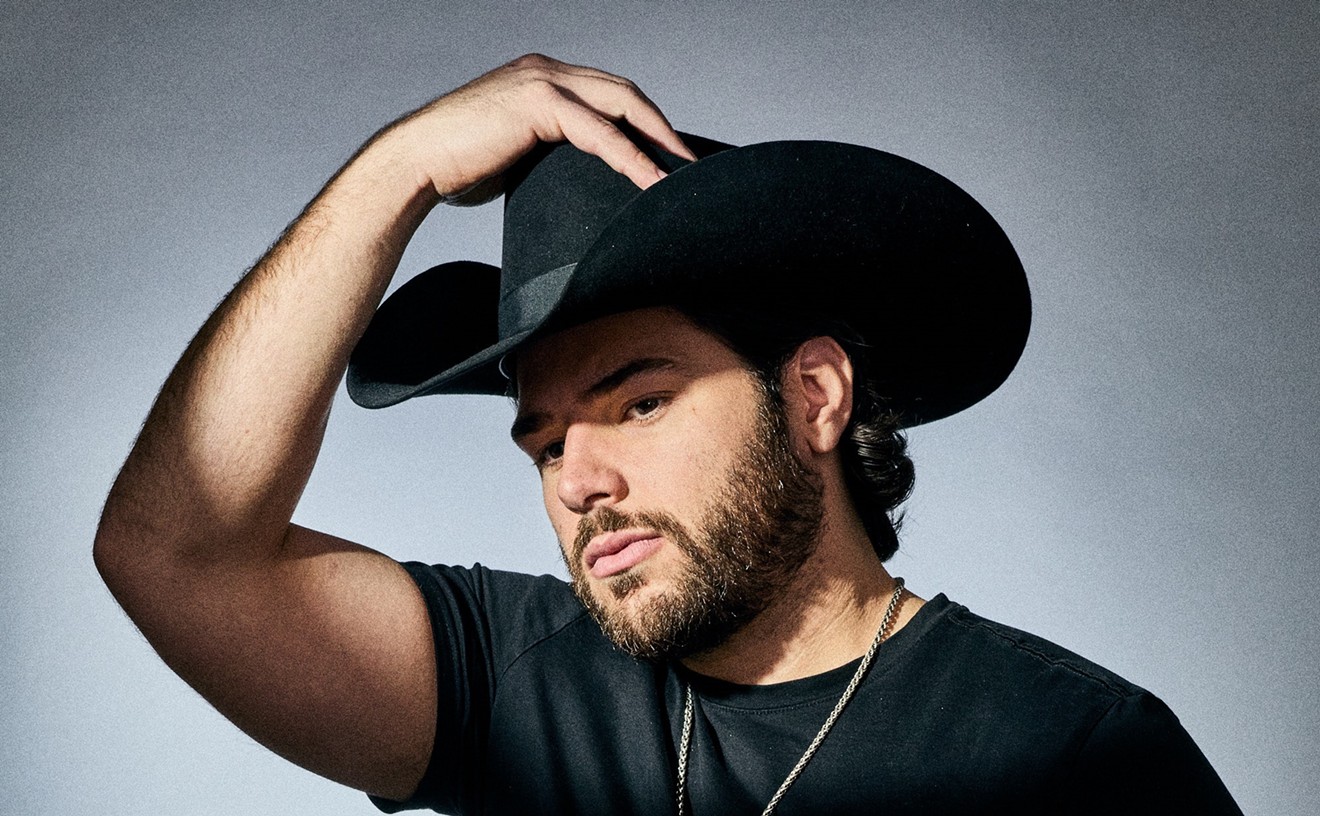After 34 years in the business, Buddy Guy wasn't wondering, as in the song title, "Where Is the Next One Coming From." Sure, his praises were sung by no less than the father (Willie Dixon), the son (Eric Clapton), and the holy ghost (Jimi Hendrix), but somehow Guy remained somewhat obscure to all but die-hard blues fans and famous friends such as Ron Wood.
Now his latest record was moving briskly, his pal Stevie Ray Vaughan had covered his tunes on his own mega-selling albums, and appearances on the Tonight Show and Letterman were becoming routine. Even Rolling Stone had found him once again. So why did it take so long for stardom to come to Buddy Guy? That's just one question that Donald E. Wilcock tackles in his new Buddy Guy oral biography, Damn Right I've Got the Blues -- Buddy Guy and the Blues Roots of Rock-and-Roll.
Although not a scholarly or critical tome, Damn Right is a sheer joy for Buddy Guy fans, quoting all the right people (Dixon, Clapton, Junior Wells, Bill Wyman, Jeff Beck) at length and tracing the axman's travels and travails through a remarkable, if careening, career. And the photos A shots of Buddy and Junior Wells flanking a patriarchal Muddy Waters, an avuncular Willie Dixon embracing his charged charge, and numerous snaps of the fiery fretshredder in action (the ones with the slicked back pompadour and sharp-creased suits are a hoot) -- are worth the price of admission alone.
Stories and anecdotes of the Chicago blues scene from the late Fifties and early Sixties, told by those who were there, are also sure to leave blueshounds drooling (Elvin Bishop's tale of the Stones's early visit to the Chess studios, where they meet a very earthy Sonny Boy Williamson II, says it all). From Buddy's first encounter with Muddy Waters (Muddy slapped him for being too proud to admit he was hungry, then fed him salami sandwiches in his car) to the West and South Side cutting contests where Guy sharpened his showy axcraft competing against the likes of Otis Rush and Magic Sam (who routinely stole and drank Buddy's first-prize bottle of whiskey), this lore provides insights into the music and those who created it.
Not surprising to those who've seen him perform, it didn't take long for Buddy Guy to become the hottest show in Chi-Town, with all of the established and soon-to-be blues elite showing up wherever he appeared. More surprising was the reluctance of Leonard Chess, owner of the fabled Chess Records -- who dismissed Buddy's electric wailing and use of feedback and distortion as nothing but "noise" -- to record the prescient picker on his own projects. Buddy languished, although not too painfully, backing up Muddy Waters (acoustic rhythm on the historic album Muddy Waters A Folksinger) and Koko Taylor (lead on her first monster hit "Wang Dang Doodle"), and finding session work outside the confines of Chess, too (billed as "Friendly Chap" on Junior Wells's "Hoodoo Man Blues" for Delmark). At the same time, attentive cats such as Yardbirds Eric Clapton and Jeff Beck and American expatriate Jimi Hendrix were studying Guy's live technique (which never translated onto vinyl, thanks to Chess) and selling it back to blues-hungry Brits and, eventually, rabid stateside teens. Cream, the Allman Brothers, the Who A everybody was getting rich off electric blues and the stage tricks Guy made famous, it seemed, except Guy.
Meanwhile, Guy accumulated labels like a Fuller Brush man's valise, eventually landing at Vanguard when they advanced him the money for his first Caddy. And although he recorded some memorable sides there, nothing really came of it. An Atlantic release, which was to be produced by friend and prodigy Clapton, was irreparably marred by Slowhand's terrible withdrawal from heroin, thus blowing yet another of Buddy's grabs for the brass ring (a sad and brutally honest chapter of Damn Right). And so it went for the next twenty years: albums that veered from so-so to brilliant (dig 1974's Drinkin' TNT and Smokin' Dynamite on Delmark with Junior or 1981's Stone Crazy on Alligator with brother Phil), until a badass Texan with a gunslinger's hat shook blues fans from their torpor and created a whole new audience in the process.
The year was 1984 and Stevie Ray Vaughan's Couldn't Stand the Weather was blasting from classic rock and blues stations around the country. An old Guitar Slim standard, "Things (That) I Used to Do," was a routine part of Guy's repertoire, and Stevie Ray included it as a tribute to Buddy, just as he had used Buddy's "Mary Had a Little Lamb" on Texas Flood. Once again, blues guitar heroes were in fashion. When Clapton -- God himself -- told Musician writer J.D. Considine that "[Buddy Guy] is by far and without a doubt the best guitar player alive," and proceeded to feature his mentor prominently in the attendance-record-setting Royal Albert Hall shows, the machinery was set in motion. Maybe this time all the stars would line up in harmonic convergence. They did and Damn Right followed on the Silvertone label, Guy's present home, where he's cut two fine slabs (including 1993's Feels Like Rain, heavy on the guest stars, but nowhere near as apocalyptic as Damn Right).
Unfortunately, Stevie Ray didn't live long enough to see what he had wrought: a contact buzz that boosted his good friend and hero to stardom. The most moving chapter of the Guy bio, in fact, traces Stevie Ray's last hours, from the shows with Guy, Clapton, and Robert Cray to the fateful helicopter trip that would have brought Stevie to Guy's Chicago club, Legends, for a monumental jam.
Wilcock tells the tale of Guy's gradual ascendance with a minimum of exposition, instead allowing other artists, family members, industry folks such as Alligator's Bruce Iglauer and longtime friend and manager Marty Salzman, as well as Guy himself, to reminisce and reflect on this important bluesman. Although mostly positive, the biography avoids coming across as a fawning promo, telling of Guy's (psychological) dependence on alcohol, his almost-career-crippling humility regarding his playing (which also fueled his development as a showman who felt the need to rely on gymnastics), and the criticism from others regarding his timing and predisposition to slip out of key, letting his overpoweringly emotional vocals and stringbending carry the weight of the song. (Of course, Wilcock holds -- and I agree completely -- that these are the very elements that make Buddy Guy such a fascinating artist.)
However, the harshest indictment comes from blues purist and Guy-admirer John Hammond -- who apparently has been living in a cave on Venus for the last three decades -- as he takes Buddy to the woodshed for indulging in rock and roll antics and "trying to make it big like Jimi Hendrix" at the expense of blues artistry. But remember, Johnny, Buddy was first and anyone who thinks he's sacrificed integrity for popularity just hasn't been listening. Or reading the right books.










